
If you are thinking about growing your own coffee plant, you’re in for an exciting adventure! Coffee plants come in different types, such as Arabica and Robusta, each with its special tastes and growth needs. To make your coffee garden flourish, you need to choose the right pot, understand what kind of soil to use, and know how much light your plants will need.
With the right care, you can enjoy the beauty of these lovely plants. You can even pair them with other plants that complement them and create a lovely indoor jungle! Let’s dive into some fun and easy tips to help you grow your coffee plants at home and make your coffee garden thrive.
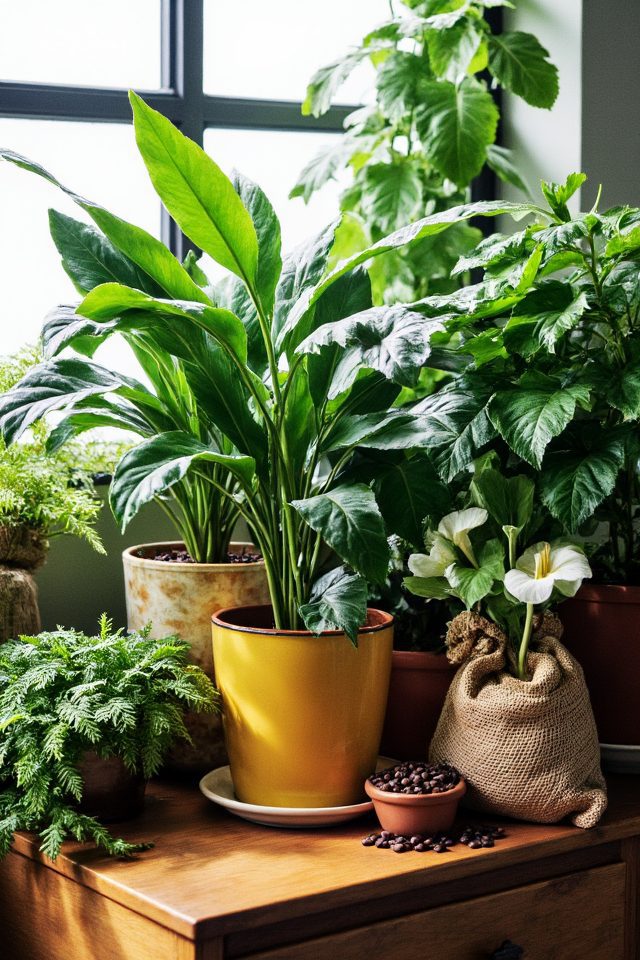
When selecting the right coffee plant variety, consider factors such as climate, space, and flavor preferences.
Arabica coffee is known for its superior taste and lower caffeine content, thriving in cooler, high-altitude regions. Robusta is hardier, offering more caffeine and a bolder flavor, ideal for warmer climates.
For home gardens, dwarf varieties like ‘Patio’ Arabica can be great for limited spaces.
Researching and understanding the needs of each variety will help guarantee a successful coffee-growing experience.
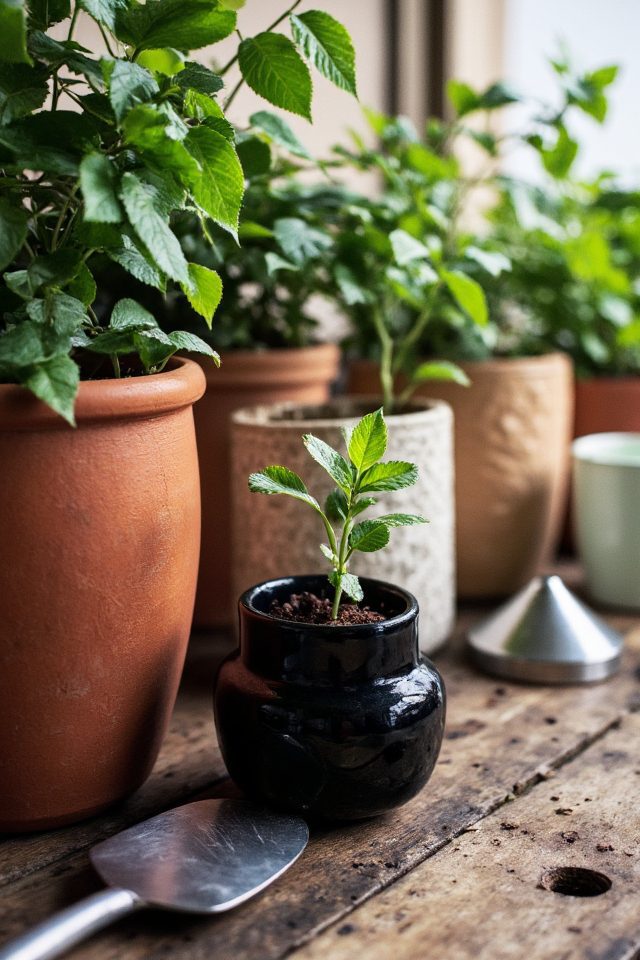
When selecting the perfect pot for your coffee plant, consider size, material, and drainage. A pot that’s at least 6-8 inches in diameter will allow for healthy root growth.
Opt for terracotta or ceramic for breathability, which helps prevent root rot. Make certain the pot has drainage holes to facilitate water flow.
Additionally, choose a pot that complements your home’s decor, as coffee plants can be beautiful houseplants, adding a touch of greenery to your space.
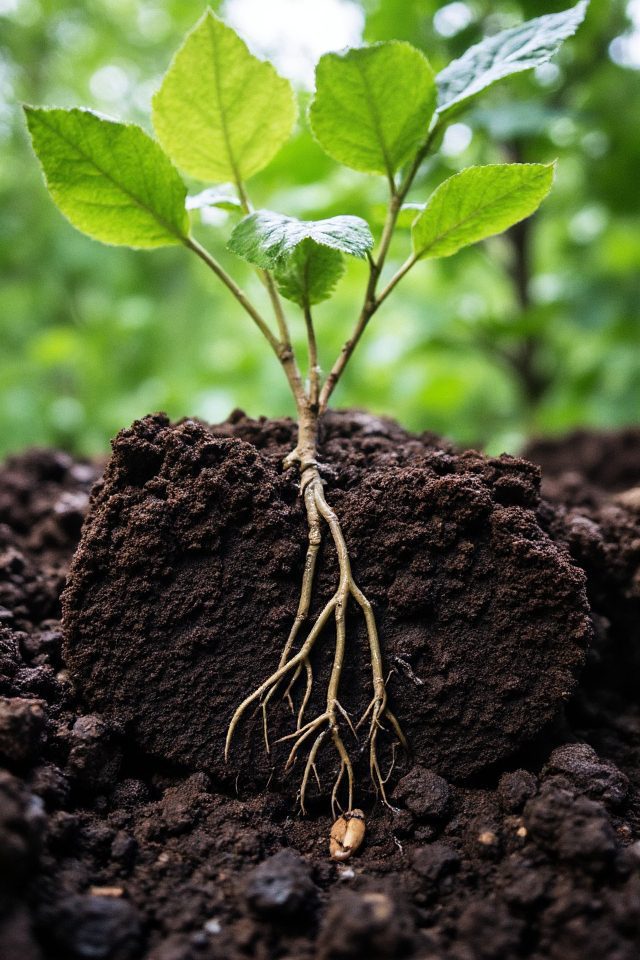
For ideal coffee plant growth, it’s vital to provide the perfect soil conditions.
Coffee thrives in well-draining, rich, and loamy soil with a pH level between 6 and 6.5. Ample organic matter is essential, as it promotes nutrient retention and enhances microbial activity.
Additionally, ensuring good aeration and moisture balance in the soil helps prevent root rot and supports healthy root development, ultimately leading to a productive coffee harvest.
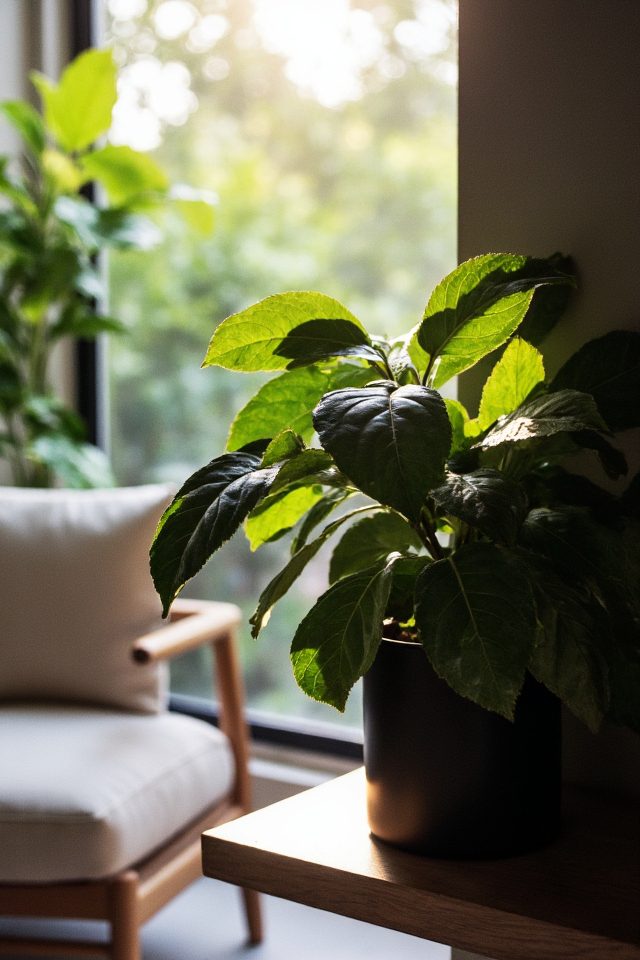
Understanding the light requirements for coffee plants is essential for their healthy growth and productivity.
These plants thrive best in bright, indirect sunlight, ideally receiving around 4-6 hours of light daily.
Too much direct sunlight can scorch their leaves, while inadequate light can hinder their development and yield.
For ideal conditions, consider placing coffee plants near a north or east-facing window, or use grow lights if natural sunlight is limited.
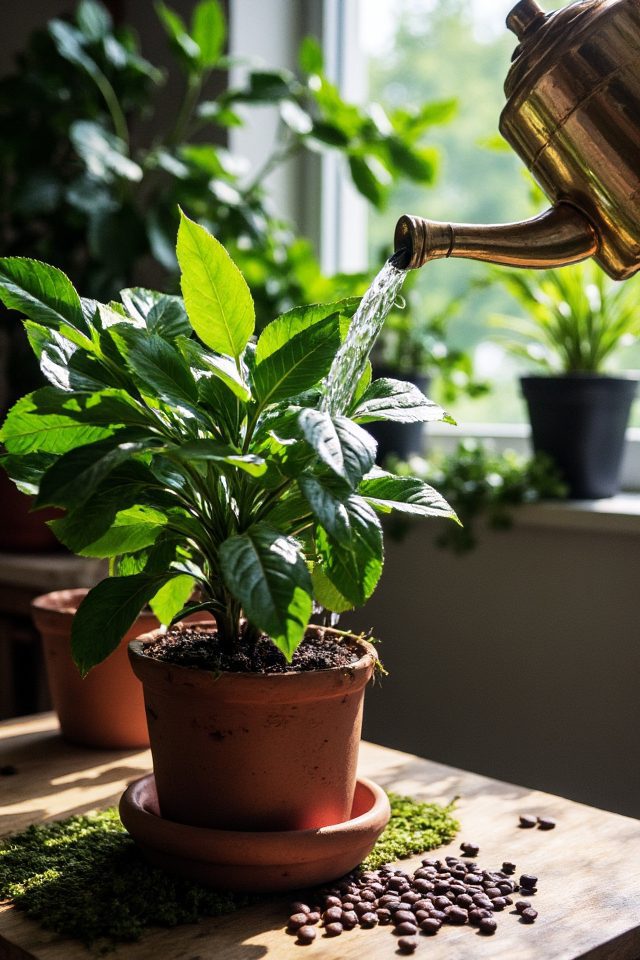
Watering your coffee plant is essential for its health and growth. Ideally, the soil should be kept consistently moist but not soggy.
Water your coffee plant when the top inch of soil feels dry to the touch, ensuring that excess water drains out to prevent root rot. During the growing season, typically spring and summer, your coffee plant may require more frequent watering.
Always use room temperature water to avoid shocking the roots.

Fertilizing is essential for the healthy growth of coffee plants, as it replenishes essential nutrients in the soil.
Using a balanced fertilizer high in nitrogen, phosphorus, and potassium promotes strong root development and enhances fruit production.
Organic options like compost or well-rotted manure provide slow-release nutrients while improving soil structure.
Regular soil testing will help tailor fertilization to the specific needs of your coffee plants, ensuring robust growth and higher yields.
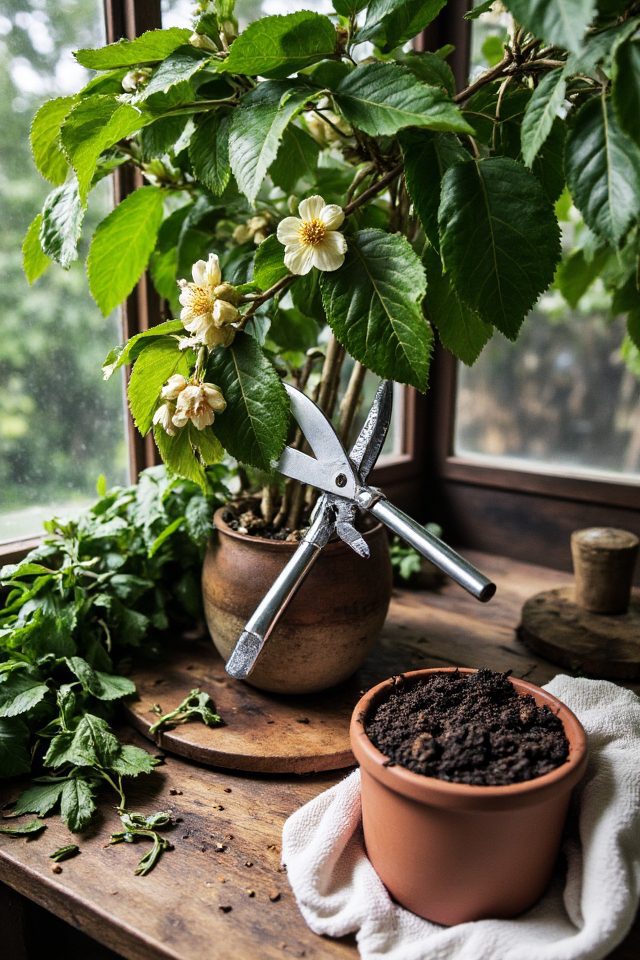
Pruning your coffee plant is crucial for promoting healthy growth and maximizing bean production.
Start by removing any dead or damaged branches to improve air circulation. Lightly trim overgrown areas to enhance sunlight penetration and encourage bushier growth. Aim to maintain a manageable height for easier harvesting.
It’s best to prune during the plant’s dormant season, typically in late winter, to minimize stress and boost overall plant vigor.
Regular pruning helps guarantee a more productive and robust coffee plant.
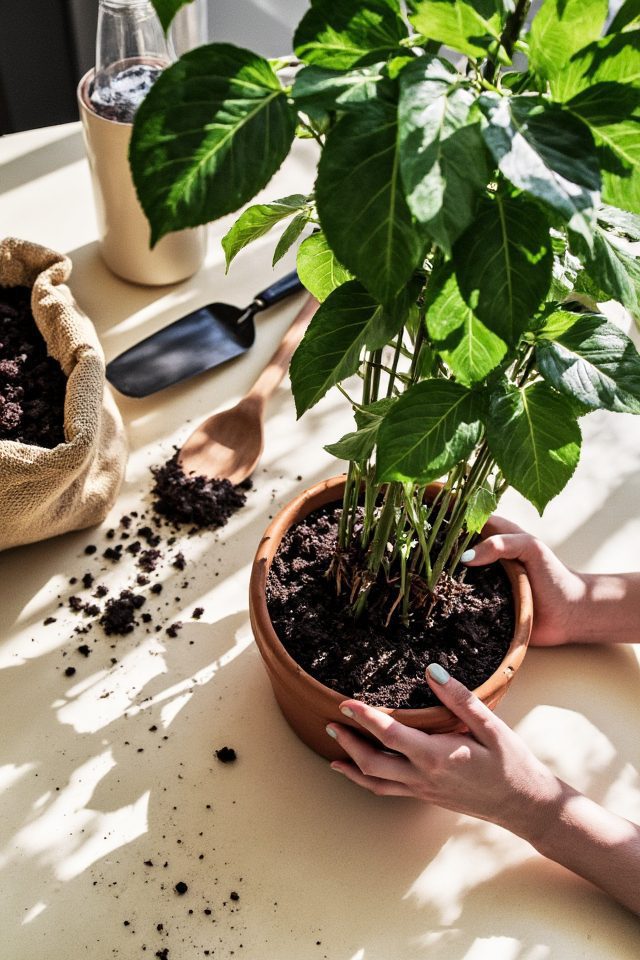
Repotting your coffee plant is essential for maintaining its health and encouraging growth.
Ideally, you should repot every couple of years or when you notice roots emerging from the bottom of the pot.
Choose a slightly larger container with good drainage and use a well-draining potting mix.
Gently remove the plant from its old pot, take care not to damage the roots, and settle it into its new home with fresh soil.
This process can rejuvenate your coffee plant and enhance its coffee bean production.
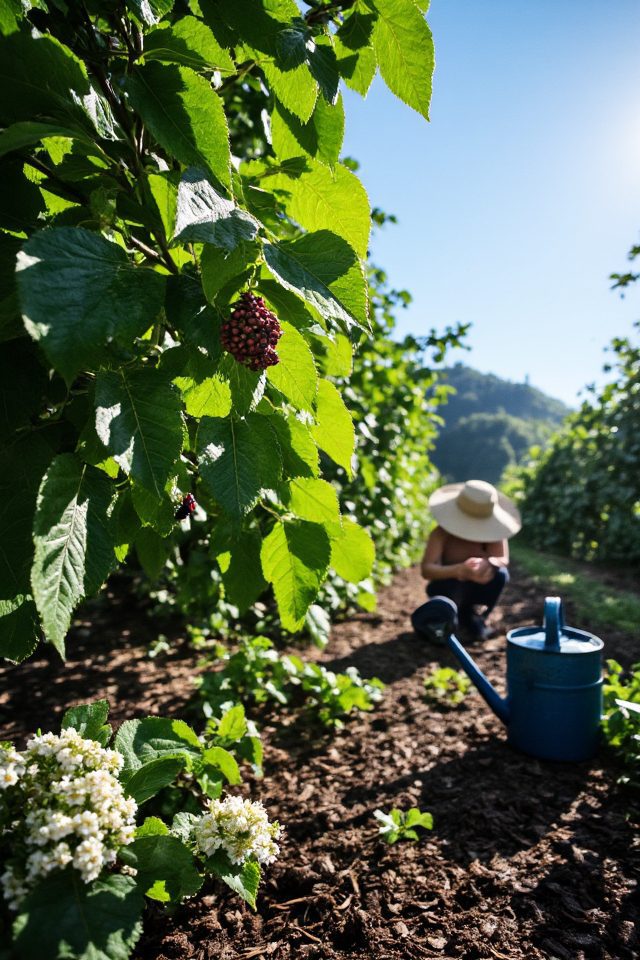
Effective pest management strategies for coffee plants are essential to maintaining healthy crops and maximizing yield.
Integrated Pest Management (IPM) combines biological control methods, such as natural predators and beneficial insects, with cultural practices like crop rotation and proper sanitation.
Regular monitoring allows for early detection of pest infestations, enabling timely intervention. Additionally, using organic pesticides and disease-resistant coffee varieties can minimize chemical exposure while promoting sustainable farming practices.
This holistic approach safeguards both the plants and the environment.
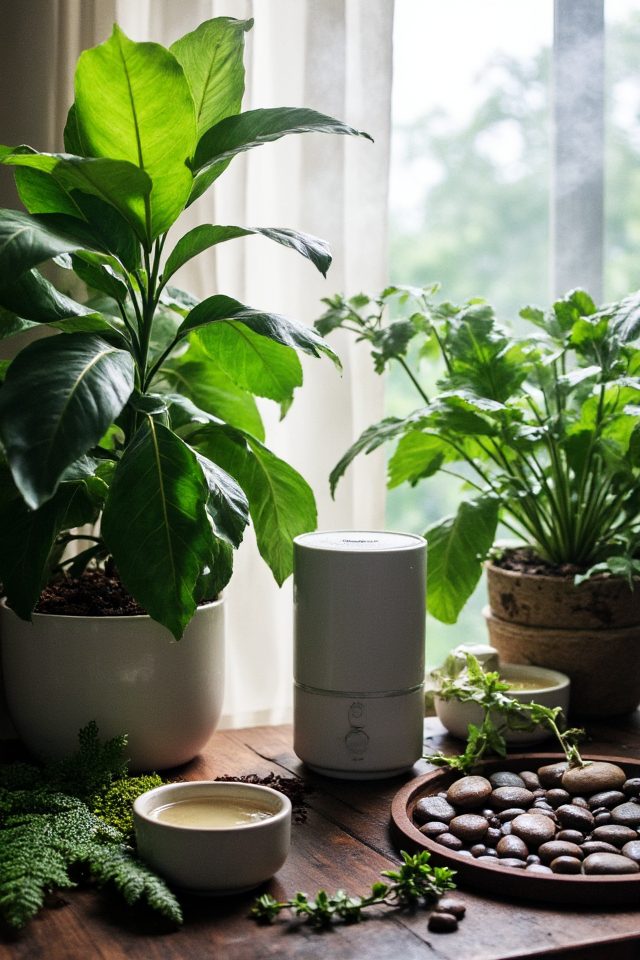
Creating a humidity-friendly environment is essential for the healthy growth of coffee plants, which thrive in tropical climates with consistent moisture.
To achieve this, consider using a humidifier or placing trays of water near the plants to increase humidity levels. Additionally, grouping plants together can create a microenvironment that retains moisture.
Regular misting and choosing the right soil mixture can further enhance humidity retention, promoting lush growth and optimum bean production.

When growing coffee plants indoors, maintaining an ideal temperature is essential for their health and productivity.
These tropical plants thrive best in temperatures between 60°F and 70°F (15°C to 24°C). Avoid exposing them to drafts or sudden temperature fluctuations, as this can stress the plant.
During winter months, consider using a heat mat or placing them away from cold windows to guarantee a stable environment. Regular monitoring of humidity levels can further enhance their growth in an indoor setting.
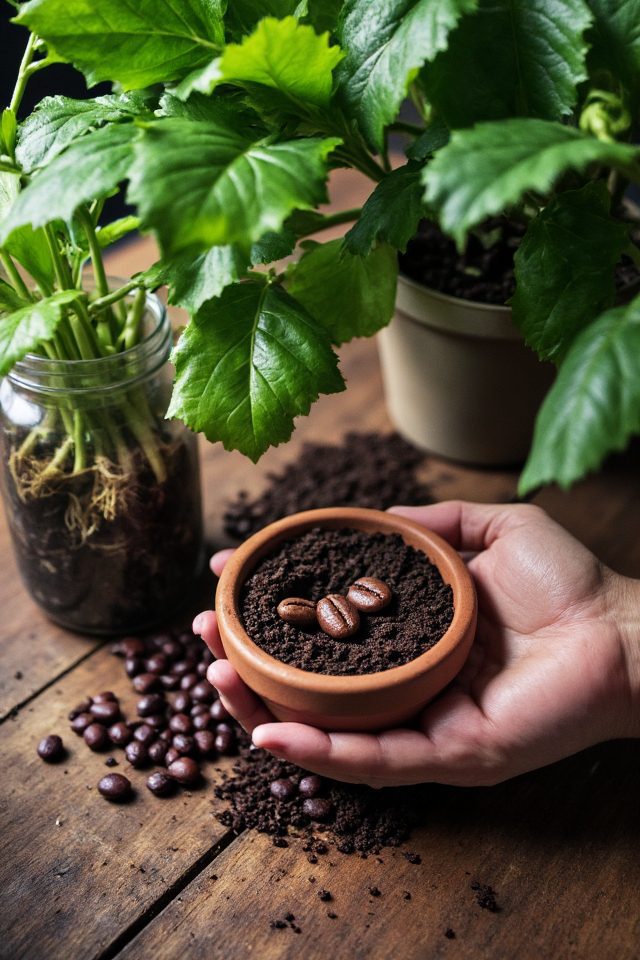
Propagating your coffee plant can be an enjoyable and rewarding process. The most common method is through seed propagation.
Begin by soaking fresh coffee seeds in water for 24 hours to soften their outer shell. Then, plant them in well-draining soil, keeping the medium moist but not soggy.
Alternatively, you can propagate through cuttings by selecting healthy stems and placing them in water or soil until roots develop. This allows you to expand your coffee garden or share plants with friends!

Harvesting coffee cherries is a meticulous process that typically occurs once the cherries are ripe, usually when they turn a vibrant red.
Farmers can choose between selective picking, where only ripe cherries are harvested, or strip harvesting, which involves picking all cherries from the branch at once. The chosen method impacts the quality of the coffee produced.
After harvesting, the cherries must be processed quickly to prevent spoilage and to maintain the flavor profiles that enthusiasts cherish.
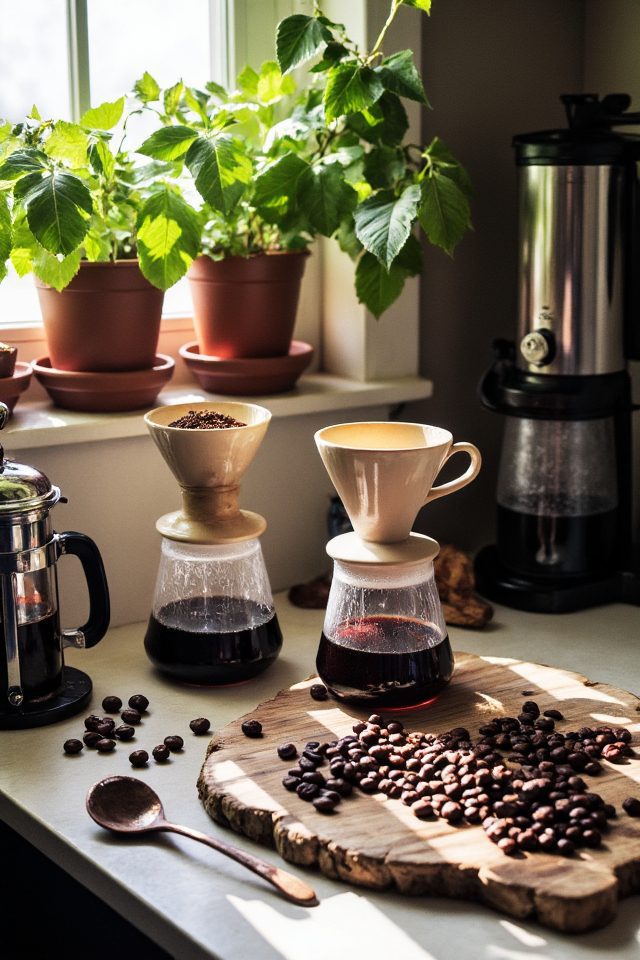
Brewing methods for your homegrown coffee beans can elevate your coffee experience and showcase the unique flavors of your crop.
Whether you prefer the precision of a pour-over, the richness of a French press, or the convenience of a drip coffee maker, each method brings out different characteristics in the beans.
Experimenting with grind size, water temperature, and brew time can help you perfect your cup, allowing you to truly appreciate the fruits of your labor.
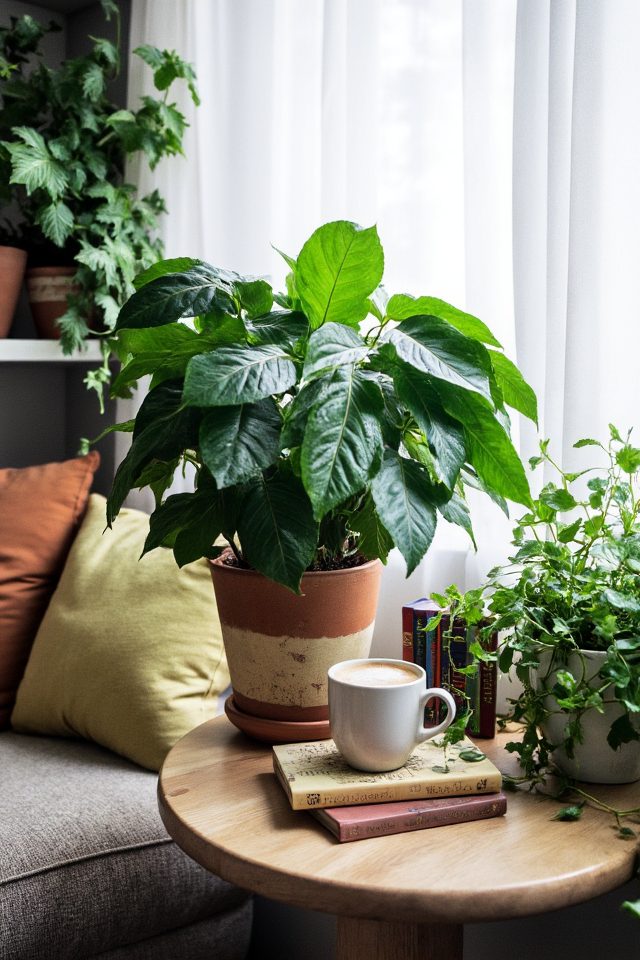
Styling your coffee plant in home decor can bring a vibrant and exotic touch to your space.
Position the plant in a decorative pot that complements your room’s aesthetic—choose ceramic or woven textures for a natural vibe.
Place it on a windowsill or a stylish stand to showcase its lush foliage.
For a cohesive look, group it with other houseplants or decorative elements that share similar colors or themes, creating a serene indoor oasis.

Sharing coffee plant cuttings is a delightful way to propagate your beloved coffee plants and connect with fellow gardening enthusiasts.
Simply take healthy cuttings from a mature coffee plant, ensuring they’ve a few leaves and a section of stem.
Place them in water or moist soil until roots develop.
This not only promotes the growth of new coffee plants but also fosters friendships rooted in a shared love for gardening and coffee culture.
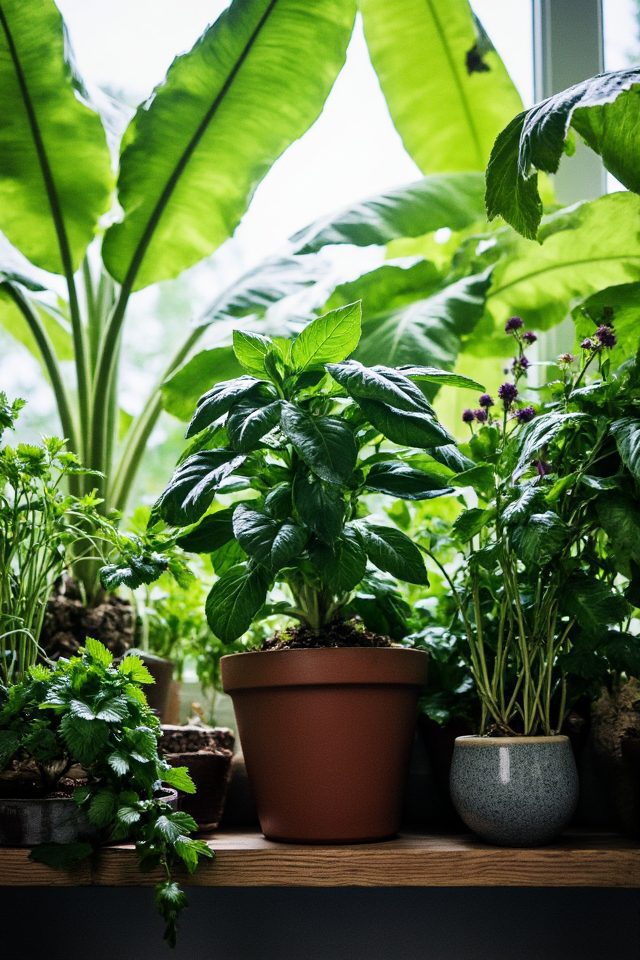
Companion planting with coffee plants can enhance growth and stimulate health for both the coffee plant and its neighbors.
Perfect companions include herbs such as basil, mint, and chives, which can repel pests and improve soil quality.
Additionally, shade-providing plants like bananas or certain trees can create a prime microclimate for coffee to thrive.
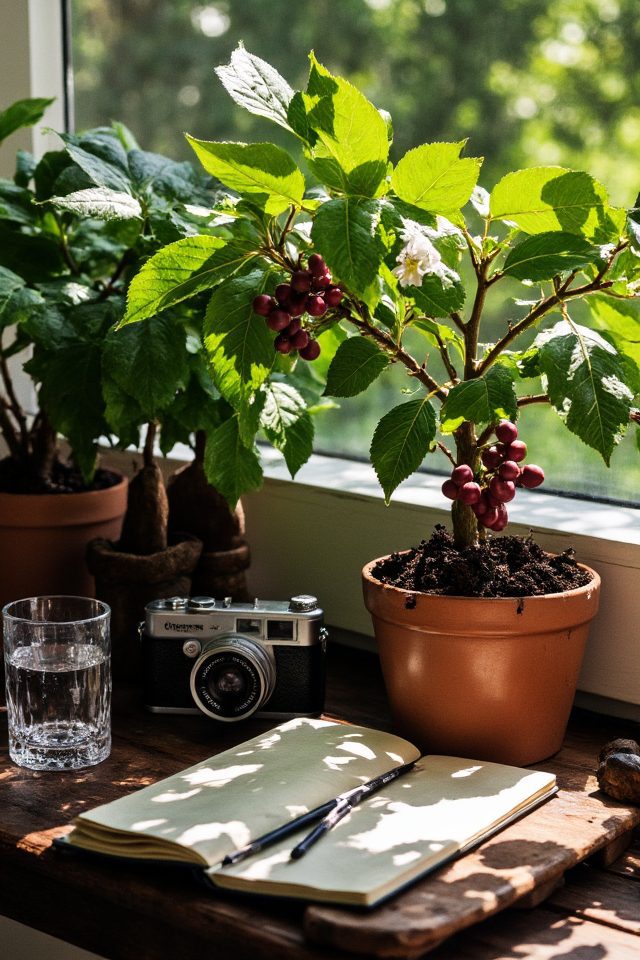
Documenting your coffee plant’s growth can be both enjoyable and informative. Keep a journal detailing each stage of development, from seed germination to budding flowers and ripening cherries.
Capture photos regularly to visually track changes and milestones. Record environmental conditions, such as light exposure and watering frequency, to identify what promotes healthy growth.
This practice not only enhances your gardening skills but also provides insight into the unique life cycle of your coffee plant.

National Coffee Day is the perfect occasion to celebrate your coffee plant!
Whether you own a robusta or arabica, take some time to appreciate the unique beauty and value of your plant.
You can enhance the festivities by brewing a fresh cup of coffee from your favorite beans while observing your plant’s growth.
Consider sharing photos on social media with friends, or even host a small gathering, allowing everyone to admire your green companion and enjoy the delightful brew together!
By embracing these indoor plant ideas, you’re not just growing your own coffee but cultivating a passion for gardening and sustainability. Whether you choose Arabica, Robusta, or dwarf varieties, nurturing your coffee plant can be a rewarding experience. Don’t forget to share cuttings and celebrate your green journey with friends. As you savor the rich flavors of homegrown coffee on National Coffee Day, you’ll find that the joy of growing your own plants transcends the cup.

Don't let aphids, slugs, and caterpillars ruin another plant. Take back control with simple, natural methods that actually work.